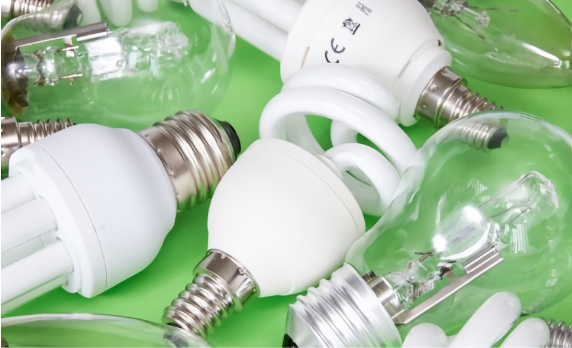By now we are all sufficiently well informed to know what the greenest and most sustainable options are for a wide range of products and services: a reusable bag is preferable to a disposable plastic one, an electric car to a conventional one, telecommuting to commuting, LED lights to traditional bulbs, recycling to not recycling and, in general, everything that promotes some kind of environmental claim or label versus what does not. But there is a danger of over-buying into the green idea: nothing we consume has zero environmental cost. And when these green promises actually misstate reality, we can be complicit through our own buying habits.
Nowadays, it’s difficult to find a company that doesn’t make green claims or tout their sustainability efforts; worldwide there are currently more than 450 ecolabels on everything from pencils to financial loans. And the profusion is understandable: according to the European Commission (EC), the global market for green and low-carbon products and services is worth €4.2 trillion. Companies are aware of this demand and the number of investors is growing.
THE MISLEADING ENVIRONMENTAL COST OF SINGLE-USE BAGS
But beyond the veracity of corporate claims or the meaning of labels, even the ideas we have about sustainable or green alternatives are nuanced. If we think of an example of the mass substitution of a product for environmental reasons, one of the first cases that must come to mind is that of plastic bags. Since Bangladesh became the first country to ban them in 2002, 127 out of 192 countries have taken action against single-use lightweight plastic bags, a petroleum-based product made from high- or low-density polyethylene (PE) (HDPE and LDPE, respectively), which are rarely recycled, can take hundreds of years to decompose and are a source of plastic and microplastic pollution.
And yet, despite all this, the research leaves no doubt: of all our bagging options—PE, reusable plastic, cotton cloth or paper—single-use plastic bags have the lowest environmental cost when considering the whole life cycle, from raw material to final disposal. According to a study by the UK Environment Agency, the carbon footprint of a paper bag is almost three times that of an HDPE bag, a reusable polypropylene (PP) plastic bag is 11 times that of an HDPE bag, and a cotton bag is off the scale.

The reason for these counterintuitive results is that the single-use bag requires the least amount of materials and energy. But, of course, the balance is tipped in favour of reusable bags because of their multiple uses, although it is useful to know how many uses are needed for this to be the better option. According to the same study, to reduce the carbon footprint below that of a disposable plastic bag, a paper bag needs to be used four times, a PP bag 14 times and a cotton bag 173 times. Another Danish study put these figures at 43 uses for paper bags, 37 for PP bags and no less than 7,100 uses for cotton bags, 20,000 uses if the cotton is organic; these two large figures included damage to the ozone layer, which does not apply to all cotton farms. Added to this is the higher production cost of organic cotton, which, contrary to what might appear to be the case, penalises these crops in terms of their carbon footprint.
REUSE TO OFFSET CARBON FOOTPRINT
But regardless of the varying figures, the message is clear: reuse is the key. If one of these disposable bags could be used as many times as one of the reusable ones, it would be the greener option. And by the same token, if a reusable bag breaks after a few uses, the environmental impact will be greater than if we had used a disposable one. What’s more, if a disposable bag is reused just once, even as a bin liner, the number of times it is necessary to reuse any of the others increases if their carbon footprint is to be smaller.
According to a study by two University of Michigan researchers, bamboo drinking straws and silicone or beeswax cotton snack bags, all of which are reusable products, never lower the environmental impact below that of their disposable counterparts because of the washing required. “Don’t always assume that reusable is the best option,” warns Shelie Miller, a sustainability expert and co-author of the study.

Offsetting the carbon footprint through repeated use is also the key to other products we consider green: both the manufacture and scrapping of an electric or hybrid vehicle has a higher environmental cost than a conventional one, mainly due to the mining of battery materials and their disposal or recycling at the end of their useful life. The impact of electric or hybrid cars must therefore be offset over the course of their use, but there is no single estimate of the number of years required for this, as it depends on whether the electricity used to recharge it comes from clean, renewable sources or not; in the UK, the period needed has been estimated to be between two and six years.
THE NEW LABEL: “NET GREEN”
In a similar vein, given that electronic devices and digital technologies have a large climate impact in their manufacture and use, an e-reader—a device for reading electronic books—has a larger environmental footprint than a traditional book, even taking into account the wood needed to make the paper. But the former can store thousands of copies, so its impact is offset. Estimates vary widely, but an average figure would be between 13 and 30 books read on an e-reader to offset its carbon footprint against those on paper, or between 5 and 9 books a year. In the words of Pierre-Olivier Roy, senior consultant at The International Reference Centre for the Life Cycle of Products, Processes, and Services (CIRAIG) in Montreal, “if you read a limited number of books, the paper book will most likely limit your GHG emissions. But for heavy readers, e-books are most likely to limit GHG emissions.”

Even solar photovoltaic panels, often considered the holy grail of the green energy transition, are not free from having an environmental impact. However, the carbon footprint of their manufacture is offset after three years of operation when compared to electricity generated by coal-fired power plants.
In short, as sustainability experts Trevor Zink and Roland Geyer wrote in the Stanford Social Innovation Review, “there is no such thing as a green product.” Instead, they propose the concept of “net green,” which calculates the balance of its environmental impact by considering all the factors involved. But they warn of the risk of the rebound effect, meaning that these products can lead people to consume more, for example by switching to a hybrid car and using it more than the previous one because it uses less fuel. Green consumerism is not the solution (see box). According to Shelie Miller, the priority should be responsible consumption; not just focusing on reusing and recycling, but also consuming less.
GREEN CONSUMERISM, PART OF THE PROBLEM
Consumers want green products, even if they don’t always buy them. Economists and consumer and marketing specialists are exploring ways to attract consumers to the green market, suggesting measures such as using social influence, forming good habits, educating the customer, etc. A key obstacle on this path is said to be the higher price of sustainable products. But the consultancy Kearney claims that companies are sabotaging sustainability by artificially inflating prices. According to the European Commission, multinational giants Xerox and Zara saved $400 million and €500 million, respectively, when they redesigned their products to reduce their life-cycle environmental impact. So it does not seem that the price premium is always justified.
But not so fast, warn some experts. Green products can lead to over-consumption that cancels out the environmental benefits achieved. One mechanism is the rebound effect; for example, LED lights are more environmentally friendly than traditional incandescent or fluorescent bulbs. But according to studies, the cheapening of lighting by this technology has led to a dramatic increase in consumption, and something similar has happened in other sectors of activity when efficiency has improved.

The rebound effect has an economic cause, but green consumerism may also be driven by the misconception that green products have no environmental impact, and therefore there is no harm in consuming more. According to the World Economic Forum, when consumers know that they have the option of recycling, they tend to increase consumption. That is why experts are calling for the need to curb our consumption, buying responsibly only what we are going to use—40% of the clothes we buy are never worn, and a third of the food we produce ends up in the rubbish bin—and encouraging reuse and the second-hand market for everything that can be reused, including books, clothing and electronic devices.
Javier Yanes
Comments on this publication